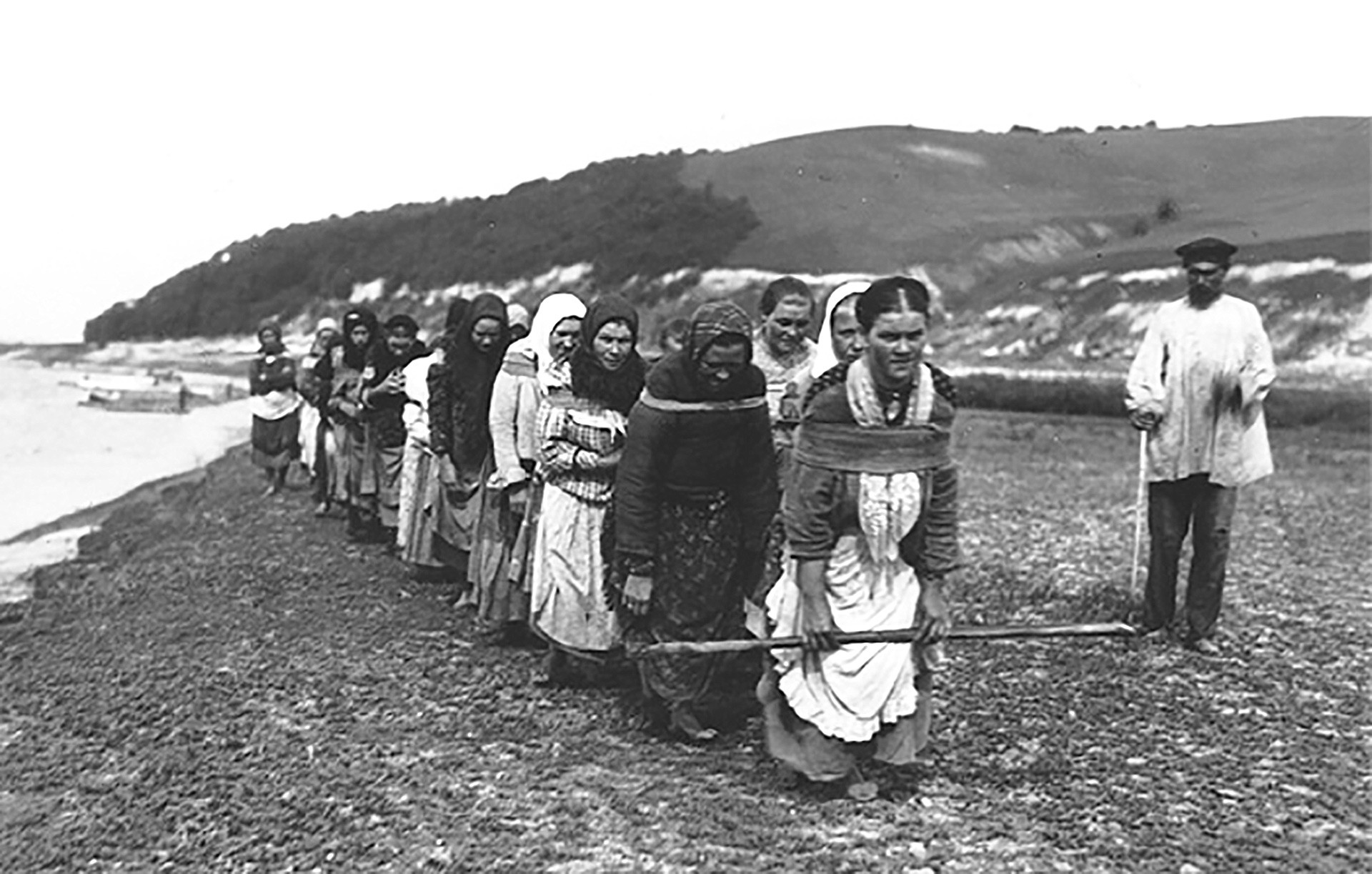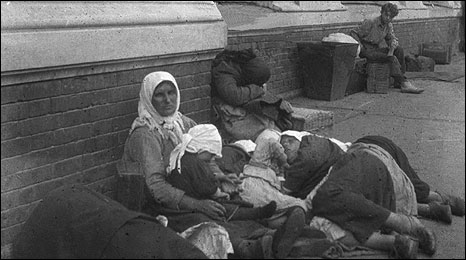Litwin
Platinum Member
USA slavery vs. Muscovite ("Russia") slavery - Serfdom , Kolkhoz. Which one was the worst one?
Muscovite Serfdom - slavery or not?
soviet Kolkhoz , slavery or not?
"
As a whole, serfdom both came and remained in Russia much later than in other European countries. Slavery remained a legally recognized institution in Russia until 1723, when Peter the Great converted the household slaves into house serfs. Russian agricultural slaves were formally converted into serfs earlier in 1679.[9][10]
Formal conversion to serf status and the later ban on the sale of serfs without a land did not stop the trade in household slaves; this trade merely changed its name. The private owners of the serfs regarded the law as a mere formality. Instead of "sale of a peasant" the papers would advertise "servant for hire" or similar.
In fact, this trade in landless serfs regarded as a mere chattel flourished all the way up until the total abolition of serfdom in 1861, although the loose framework of the Russian legal system and a lack of law enforcement meant that slave trade in some remote eastern Russian provinces survived until much later period.[citation needed]
The official estimate is that 10.5 million Russians were privately owned, 9.5 million were in state ownership and another 900,000 serfs were under the Tsar's patronage (udelnye krestiane) before the Great Emancipation of 1861.
One particular source of indignation in Europe was Kolokol published in London, England (1857–65) and Geneva (1865–67). It collected many cases of horrendous physical, emotional and sexual abuse of the serfs by the landowners."
Serfdom in Russia - Wikipedia
"In a kolkhoz, a member, called a kolkhoznik (Russian: колхо́зник, feminine form kolkhoznitsa, Russian: колхо́зница), received a share of the farm's product and profit according to the number of days worked, whereas a sovkhoz employed salaried workers. In practice, most kolkhozy did not pay their "members" in cash at all. In 1946, 30 percent of kolkhozy paid no cash for labor at all, 10.6 paid no grain, and 73.2 percent paid 500 grams of grain or less per day worked.[5] In addition the kolkhoz was required to sell its grain crop and other products to the State at fixed prices. These were set by Soviet government very low, and the difference between what the State paid the farm and what the State charged consumers represented a major source of income for the Soviet government."
Kolkhoz - Wikipedia





Muscovite Serfdom - slavery or not?
soviet Kolkhoz , slavery or not?
"
As a whole, serfdom both came and remained in Russia much later than in other European countries. Slavery remained a legally recognized institution in Russia until 1723, when Peter the Great converted the household slaves into house serfs. Russian agricultural slaves were formally converted into serfs earlier in 1679.[9][10]
Formal conversion to serf status and the later ban on the sale of serfs without a land did not stop the trade in household slaves; this trade merely changed its name. The private owners of the serfs regarded the law as a mere formality. Instead of "sale of a peasant" the papers would advertise "servant for hire" or similar.
In fact, this trade in landless serfs regarded as a mere chattel flourished all the way up until the total abolition of serfdom in 1861, although the loose framework of the Russian legal system and a lack of law enforcement meant that slave trade in some remote eastern Russian provinces survived until much later period.[citation needed]
The official estimate is that 10.5 million Russians were privately owned, 9.5 million were in state ownership and another 900,000 serfs were under the Tsar's patronage (udelnye krestiane) before the Great Emancipation of 1861.
One particular source of indignation in Europe was Kolokol published in London, England (1857–65) and Geneva (1865–67). It collected many cases of horrendous physical, emotional and sexual abuse of the serfs by the landowners."
Serfdom in Russia - Wikipedia
"In a kolkhoz, a member, called a kolkhoznik (Russian: колхо́зник, feminine form kolkhoznitsa, Russian: колхо́зница), received a share of the farm's product and profit according to the number of days worked, whereas a sovkhoz employed salaried workers. In practice, most kolkhozy did not pay their "members" in cash at all. In 1946, 30 percent of kolkhozy paid no cash for labor at all, 10.6 paid no grain, and 73.2 percent paid 500 grams of grain or less per day worked.[5] In addition the kolkhoz was required to sell its grain crop and other products to the State at fixed prices. These were set by Soviet government very low, and the difference between what the State paid the farm and what the State charged consumers represented a major source of income for the Soviet government."
Kolkhoz - Wikipedia




